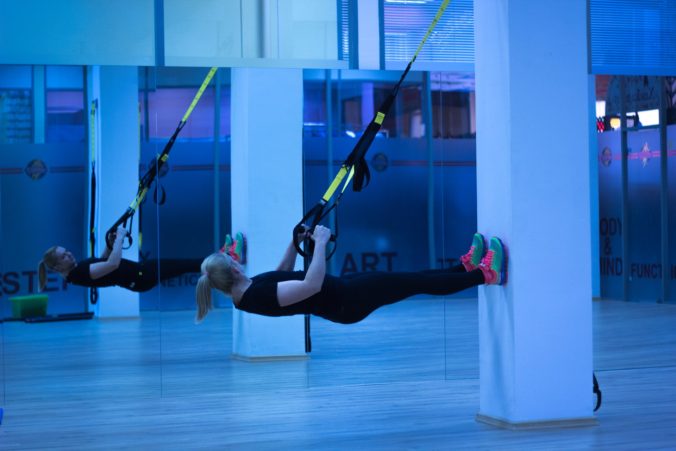I just wrapped up a series of fitness classes that I was teaching to the staff of a local hospital. Throughout the late Summer and Fall, I was able to see these fantastic individuals—who through their work are invested in bettering the health of their fellow humans, in one capacity or another—choose to invest in themselves too through exercise.
Unfortunately there are still too many group classes where the focus is put on just working hard (vs working smart) without rhyme or reason, and where the discourse still revolves around burning calories.
Not with me.
At the beginning of the term, I chose to offer my groups a different kind of experience: learning to move better.
It was fascinating for me, week after week, to lead these dozens of people from all walks of life and with a wide range physical abilities, and see them grow through the process.
One of the most crucial conversations we’ve had during these weeks is about identifying as an athlete. Some had an athletic background, and some did not. Yet none of them, despite their current training, considered themselves as an athlete.
And so I worked to change that.
I get it: the word athlete isn’t one that I used to describe myself until pretty recently. Growing up, I didn’t play sports, instead studying ballet and modern dance at a time when dancers’ athleticism wasn’t recognized like it is today.
Granted, being an athlete can certainly be linked to what you can do, and we don’t all have the same physical abilities.
But there’s another side to it: training like an athlete. And while not every one of us can reach star athlete status, we can all choose to train like one.
Here are three strategies you should adopt…
1) EXCELLENCE IN EXECUTION
Whether it’s group exercise classes or training on one’s own, most forms of working out are still marketed at large as a way to burn calories, lose weight, shrink yourself, etc.
Yawn.
While I’ll grant you the autonomy to have whichever goals you want, I still advocate switching from trying to be less to striving to be more.
Every. Single. Time.
By concentrating on getting better at what you’re doing, by expending energy towards increased proficiency, by striving for excellence in execution, you’re actually working to build something.
This brings more focus and more purpose to your workouts, which in turn will make them more satifying. You can direct all your will to becoming less, and be very underwhelmed with the results; yet if you invest the same amount of energy on improving the way you move, you’ll have much more tangible returns.
2) INVESTIGATION & INVESTMENT
Training is serious business, and you don’t want to start taking advice from all the armchair coaches out there. Just as athletes seek out the best coaches in their sport, instead of listening to any bozo off the street, you too should seek out the best information from the best sources.
This is both easy and tricky.
While the internet makes information increasingly accessible—all kinds of information—remember that there’s no built-in quality filter, and so you’ll need to exercise your own: critical thinking.
Thankfully, there is a lot of fantastic information out there, and even if you’re not yet ready to invest financially in high-quality coaching, you can still find reliable resources that will keep you up to date with the latest research (for body-positive, evidence-based information, I always recommend that women check out Girls Gone Strong).
Remember: in any field, including exercise, things evolve—sometimes at a relatively rapid pace. Just because something you learned fifteen years ago was the best thing ever back then doesn’t mean that it necessarily holds true today. Making sure to keep your horizons open and keeping up with some of the latest research (note: I said research, not trends) can help you progress safely and smartly.
Does it require more time? Yes. More money? Maybe.
But aren’t you worth it?
3) IMPECCABLE RECOVERY
There’s one thing that high level athletic training systematically includes, and yet that most of us are missing: strict recovery modalities.
Even when we use physical activity as a means to alleviating the stress that we experience in the other areas of our life, exercise in and of itself is stressful to our system. Stress is stress, and there’s only so much that the body can deal with before our performance starts being negatively affected.
By tackling recovery like an athlete, we stop seeing it as something optional, and understand that it’s an inherent part of the process.
Prioritizing recovery means that we’re thinking beyond immediate returns, and creating conditions favorable to sustainability.
Which scenario is more appealing to you, truly? Sacrificing longevity for immediate gains, or doing everything in your power to make sure you’ll still be moving and thriving for decades to come?
I know which one I’m choosing.
Like what you just read? There can be more coming your way, including insiders-only content and juicy insight, when you join my Special Crew! Click here to get in (it’s free!)

